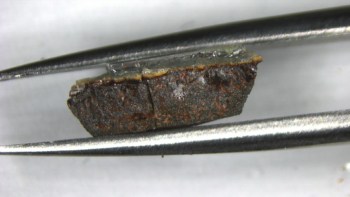
A new X-ray diffraction technique that works on single organic molecules has been demonstrated by an international team of researchers. The team hopes that, with further development, the method could be used to work out protein structures and even investigate entire living cells.
X-ray diffraction is a powerful tool for determining molecular structures and was famously used by James Watson and Francis Crick to reveal the double helix of DNA. However, the diffraction signal from individual molecules is weak and physicists have taken two main approaches to amplify it. One is to incorporate large numbers of the molecules into a regular crystalline array – Watson and Crick’s approach – however, not all molecules can be crystallized. The second is to boost the X-ray exposure time and/or intensity, which has the downside of altering or even destroying the molecule in the process.
In 2000 researchers at Uppsala University in Sweden, led by biochemists Richard Neutze and Janos Hajdu, suggested using ultrashort pulses from a high-intensity X-ray free-electron laser. While such pulses destroy the molecules, repeating the measurement on multiple samples would allow a diffraction image to be built up. To make the technique work, however, the molecules in successive samples would all have to be oriented the same way.
Now, Jochen Küpper of the Centre for Free Electron Laser Science in Hamburg and colleagues in Germany, Denmark, the Netherlands, Sweden and the USA have created a beam of molecules that fits the bill. Working at the Stanford Linear Accelerator Laboratory in California, the team began with an ultracold beam of 2,5-diiodobenzonitrile molecules bathed in polarized laser light. Each molecule contains two iodine atoms that are on opposite sides of a benzene ring. The electric field of the laser light causes the molecules in the beam to line up along the axis defined by these two atoms.
Powerful X-ray laser
The researchers then pass the beam through pulses from the Linac Coherent Light Source (LCLS), which is the world’s most powerful X-ray free-electron laser. Powerful electrodes placed around the interaction point allow the team to collect and detect iodine atoms that are ejected from the molecules by the intense X-ray pulses. By tracing these atoms back to where they were liberated from the molecules, the team was able confirm that the molecules were properly aligned.
Diffracted X-rays from multiple pulses were combined to create a diffraction pattern that was then used to estimate the distance between the two iodine atoms. The result was an iodine–iodine separation of 800 pm, whereas the known distance is 700 pm. This discrepancy is not surprising, the researchers say, because the wavelength of the X-rays was 620 pm, making it difficult to resolve distances finer than this. Shorter wavelengths of 100–200 pm have since become available at the LCLS and will be soon available at the European XFEL, which will open in Hamburg in 2015. The researchers hope to use these shorter wavelengths to obtain detailed structural information about larger biochemical molecules, such as peptides.
Neutze, who was not involved in this latest work, is impressed: “Using an applied laser field to align the molecules is clearly an advance and it works extremely well.” He says that extending the method to more complex and interesting chemical and biochemical systems will be “an uphill challenge”, but concludes that he “would not have expected the data to be this convincing in the first place”.
“Important proof of principle”
John Helliwell, a crystallographer at the University of Manchester, also calls the research “an important proof-of-principle demonstration”. However, he points out that some of the team published a theoretical paper in 2005 that surveyed various molecules of increasing complexity and biological relevance, and calculated the degree of angular alignment necessary to resolve important details of their structures. He suggests that a more convincing test of the technique would involve copper phthalocyanine, which was the simplest of the molecules surveyed.
Küpper, who was not an author on the 2005 paper but who currently holds the record for molecular alignment, responded by saying “The alignment parameters for copper phthalocyanine assumed in that paper are simply not achievable with current understanding and technology.” He has received a grant from the European Research Council to investigate the creation of molecular beams of identical, pre-aligned large molecules such as peptides. Helliwell agrees with this aim. “This is important research, which should indeed be strongly supported,” he says.
The research is published in Physical Review Letters.
There is much more about the European XFEL in this video interview with DESY’s director Helmut Dosch.



